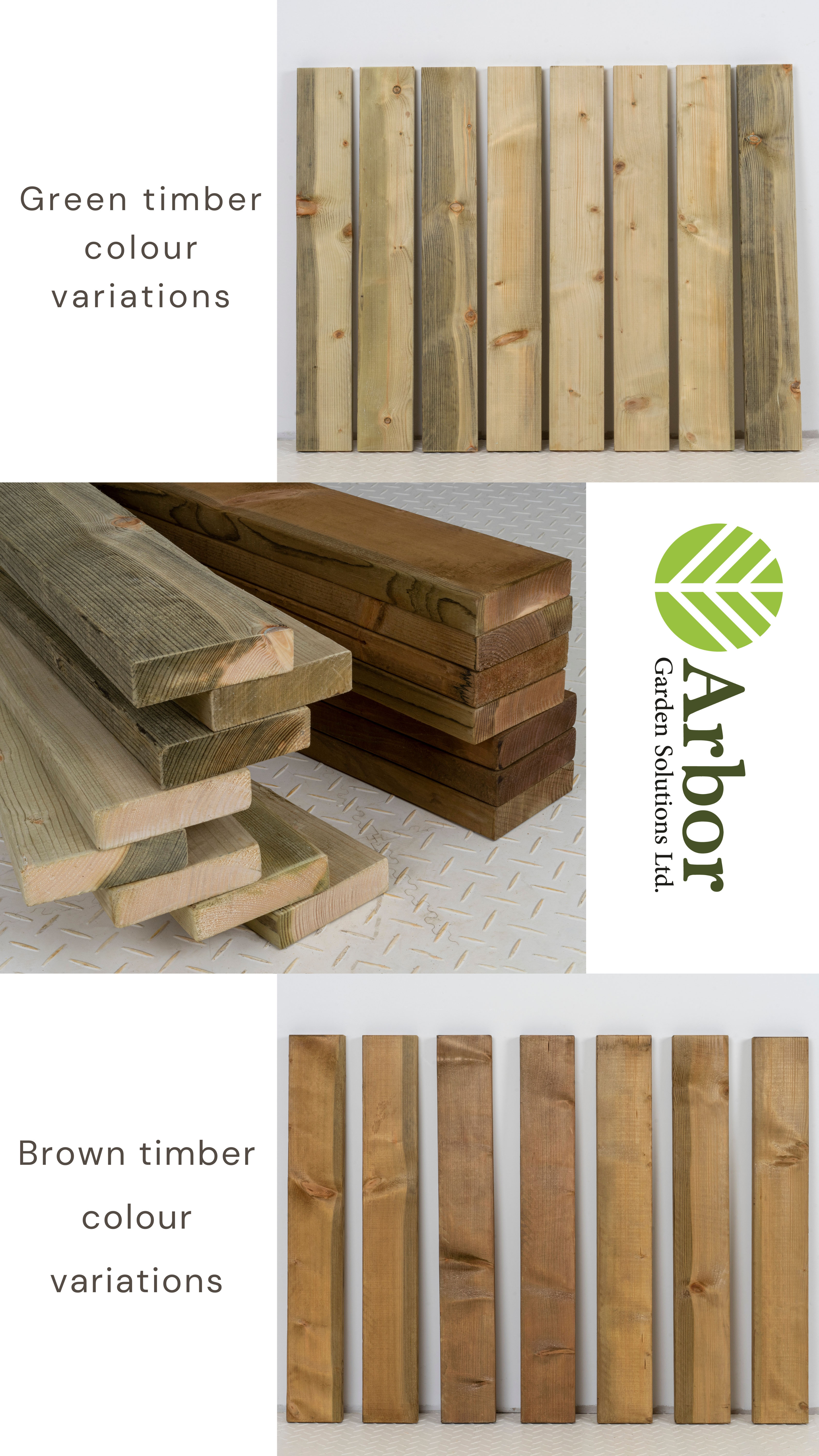Timber is a versatile material used in construction, furniture making, and a host of other applications. One of the most striking features of timber is the natural colour variations seen in timber planks and sawn timber. In this blog post, we will explore the reasons behind these variations and why pressure-treated timber can have different shades. Additionally, we will discuss how the imperfections in timber add to its beauty and provide tips on how to increase the longevity of your wooden furniture.
Natural Colour Variations in Timber
The colour variations seen in timber are due to several factors, such as the tree's species, growing conditions, and age. Each species of tree has its unique colours, ranging from light yellows and oranges to dark browns and blacks. The amount of sunlight and water a tree receives while growing can also impact its timber's colour, while the heartwood of older trees is typically darker than that of younger trees. The combination of these factors results in natural variations in timber colour, making each piece unique.
Pressure Treated Timber
Pressure-treated timber is treated with chemicals to protect it from decay and rot. The chemicals used can cause the timber to take on a greenish or brownish tint. The type and concentration of chemicals used and the treatment duration affect the colour of pressure-treated timber, leading to variations in colour.
The Beauty of Imperfections in Timber
Imperfections such as knots, cracks, and splits are often seen as defects in timber, but they can add to its natural beauty. Knots create unique patterns and textures, while cracks and splits add a rustic, aged look. Imperfections tell the story of the tree's growth and its environment, adding to the uniqueness of each piece of timber.
Increasing the Longevity of Wooden Furniture
Proper care is essential to increase the longevity of wooden furniture. Moisture is a common enemy of timber furniture as it can lead to warping, cracking, and rotting. To protect your wooden furniture, keep it away from direct sunlight and heat sources and use coasters and placemats to prevent spills and water rings. Regular cleaning and oiling also help to protect the wood and maintain its beauty over time.
In conclusion, the natural colour variations in timber and the imperfections it may have are what make each piece unique and beautiful. Pressure-treated timber's colour variations result from the type and concentration of chemicals used during treatment. By properly caring for your wooden furniture, you can increase its longevity and continue to enjoy its beauty for years to come.

